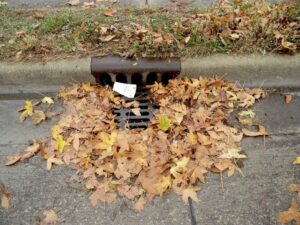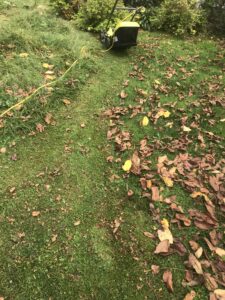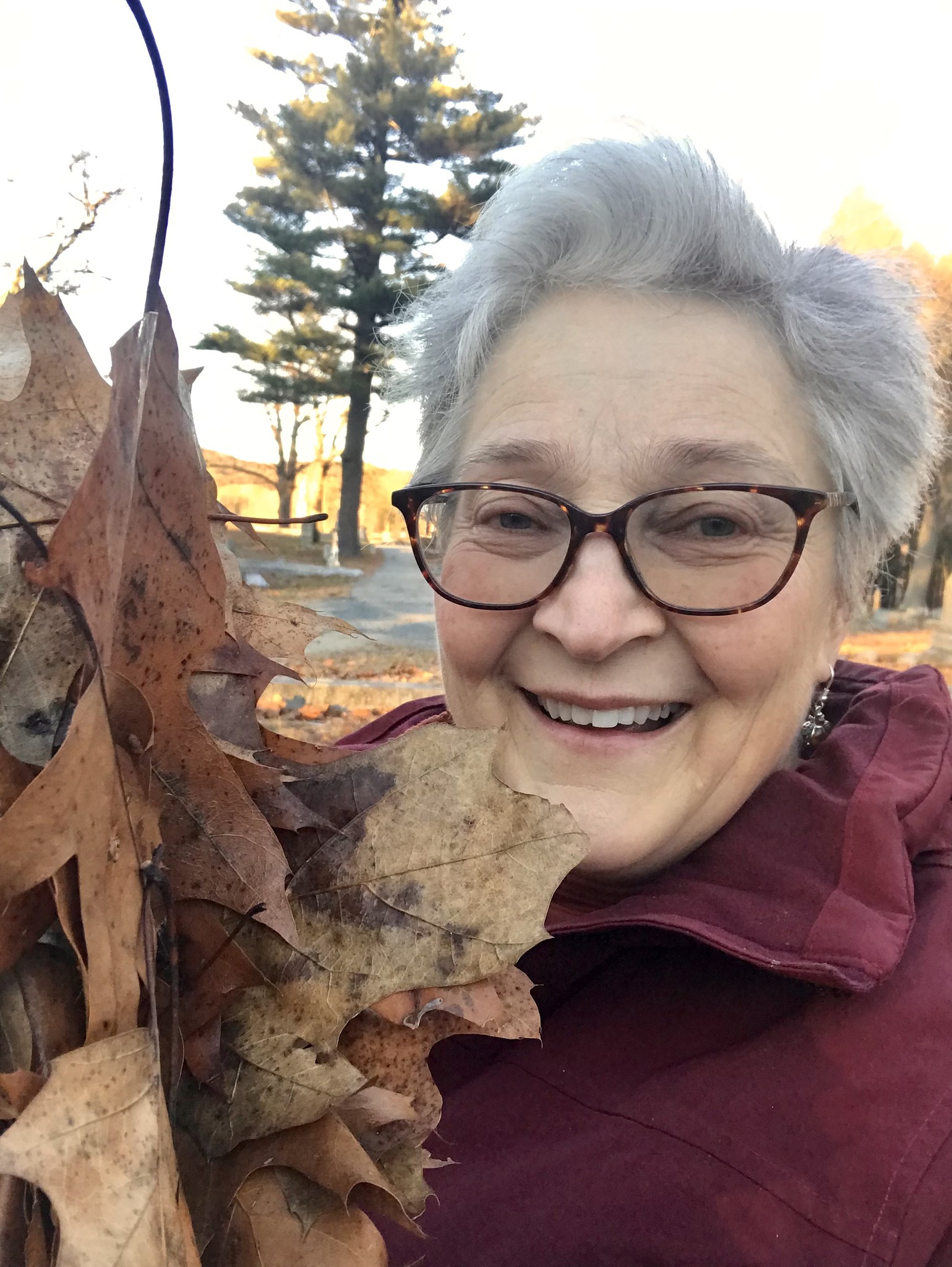It’s high leaf season in the Northeastern US now. Buses bring city folk to our Monadnock roads and highways as the Leaf Peepers inside view the gorgeous displays of fall leaf color through glass. However, those of us who live here have more and different experiences with fall leaves. We see the glorious colors as part of our daily routines. We hear the leaves rustle in the trees as the blustery winds roll through. We notice their sparkling colors as rain enhances their glory…and then the leaves fall to the ground. Ay jeez, then many of us like our fall leaves much less.
Now you know that I mentor homeowners looking to take care of their landscapes with less chemicals, less lawn and more native plants for their, their children, their pets’ and their community’s health. But, what does ‘Leaving the Leaves’ really mean? Let’s take a closer look at the idea for our most common surfaces where leaves fall.

‘Leave the Leaves’ that fall on Paved Surfaces? Nope – Fall leaves are a slipping hazard on our driveways and sidewalks. If left, rain flushes these leaves into the street, exacerbating flooding events. I mow my sidewalk and driveway leaves frequently, when they are dry, with my tiny electric mower, set on its tallest setting from my driveways and sidewalks. Shredded leaves make a fabulous, free, beautiful and nutritious mulch for our gardens. This shredded version has much less surface area and doesn’t blow around like whole leaves.

‘Leave the Leaves’ that Fall in Your Food and Landscape Garden Areas? Absolutely! All of our fall leaves are an excellent source of nutrients and organic material for our gardens and plants. Remember, leaves are how trees recycle and reuse their nutrients each year! Except when we take them away to be ‘neat’. ☹️ A ‘blanket’ (3” +/-) of our fall leaves is terrific, in our gardens, pulled away from the tops and stems of perennials and trunks of shrubs and trees. Think of leaving a ‘doughnut hole’ around the base of existing plants. This blanket offers multiple benefits throughout the entire year by moderating soil temperature in the summer’s heat, holding moisture for plant roots between rain events, providing nutrients to your plants as they break down and protecting plant roots from our drying winter winds now that we have less insulating snow.

‘Leave the Leaves’ on Your Grass/Lawn/Turf? Nope. The University of New Hampshire Extension Service states: “Leaves that are left on the lawn can promote snow mold diseases which can cause significant damage to turf grass in the winter and early spring.” That said, mowing leaves off of your lawn in open areas, frequently, when the leaves are dry, is good for your grass. Even Bob Vila agrees: ‘Don’t rake ’em, m(ow) ’em! Your back will thank you, and you’ll be able to spend your autumn mornings sipping cider instead of bagging leaves.’
Lastly, ‘Leave the Leaves’ Below Your Oak and Cherry Trees? Only if you want to protect the ‘nurseries’ of over 400 caterpillar species. What?! Xerces.org, a society for invertebrate conservation, tells us that ‘Great spangled fritillary and woolly bear caterpillars tuck themselves into leaf piles for protection from cold weather and predators. Red-banded hairstreak (butterflies) lay their eggs on fallen oak leaves, which become the first food of their caterpillars when they emerge. Luna moths and swallowtail butterflies disguise their cocoons and chrysalises as dried leaves, blending in with the “real” leaves.’ This National Wildlife Federation document shows the other other trees and plants that are also highly valuable host for important caterpillars and native bees: https://bit.ly/40bjqpx
Lastly, if your entire house is lickity-split clean already and you decide you need to extend your tidiness outside as well (really?), make sure you wait until late in the season so as not to destroy all the pollinators’ lives you may want to enjoy later.
As printed in the November 1, 2023 Monadnock Shopper News
Resources:
https://extension.unh.edu/blog/2018/10/it-absolutely-necessary-rake-leaves-fall-or-can-it-wait-until-spring
#nhbusiness #leavetheleaves #xerces #gardentherapy #

